Do you remember THIS painting that fell on the floor and was ruined? So sad, but at least it gave me the opportunity to mix more of those glorious colors and give it another try. I’ll do exactly the same and then we can compare it to my results the first time.

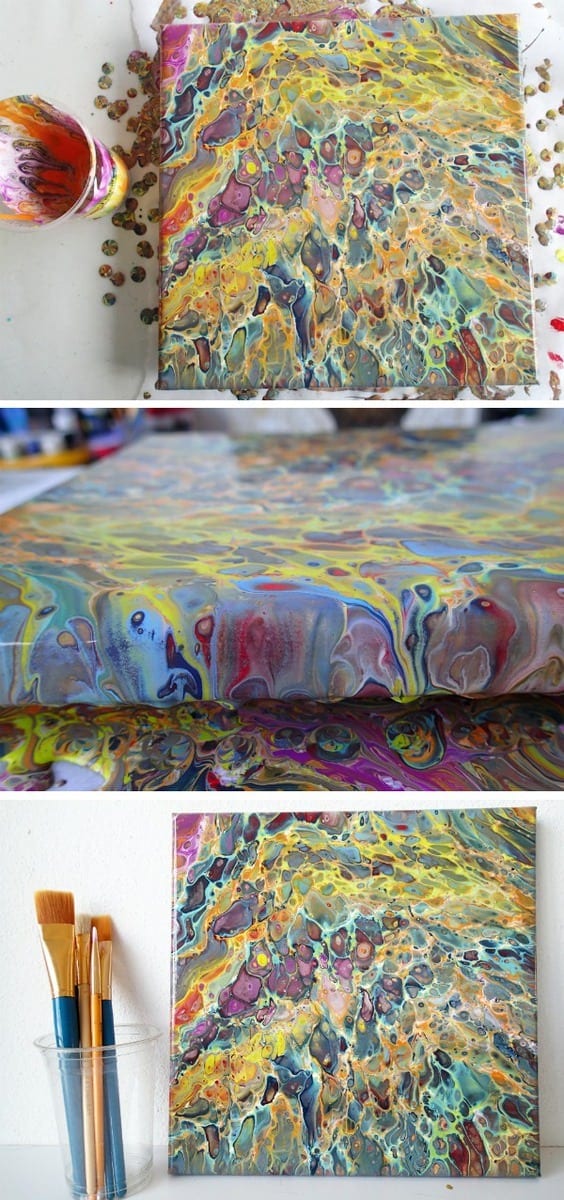
I am doing this one just slightly different. In the original painting, I poured all of the paints into the dirty pour cup from on high and allowed /caused them to mix more in the cup. It gave quite a subtle end result as the mixing of all the colors together and with the white muted out the brightness into a calmer effect. This time I will layer the colors much more carefully in the cup, and from lower down, so they don’t mix as much and let’s see if it makes much of a difference.
Materials used in this painting:
DecorArt Americana Multisurface acrylics in Bright Orange, Chartreuse, Cotton Ball white, Purple Sunset, True Red, Deep Midnight Blue and Indian Turquoise
Floetrol
Treadmill silicone oil
Canvas from economy pack
Polycrylic gloss protective finish
Recipe:
For each of the DecoArt colors, 15g of the paint plus 10g of Floetrol. 1 drop of the Treadmill silicone oil per color.
Well, now wasn’t that better. In the end, I was almost glad I dropped the first one, because it gave me this opportunity to use those same amazing colors again. This time, by layering them carefully and not allowing them to mix so much in the cup, I got a completely different result and I have to say – I love it!
Here are some photos from this project, both wet and dry, and close-ups of the details.
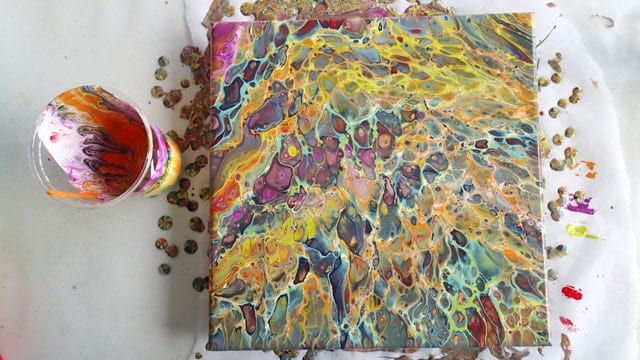
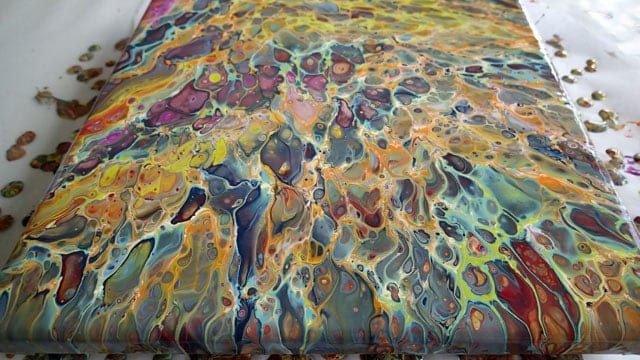

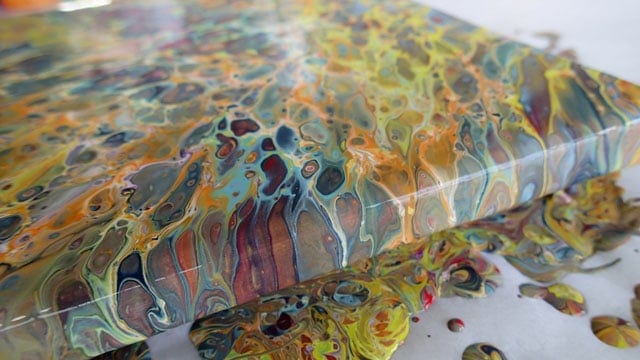
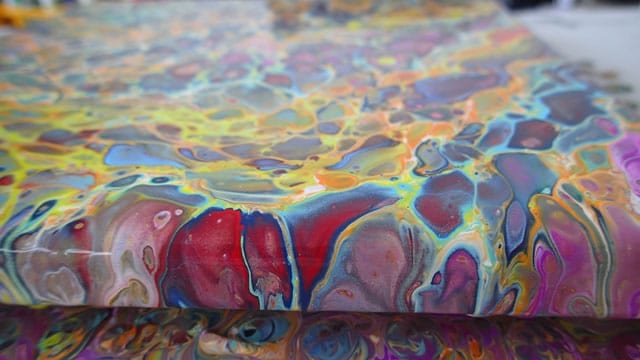
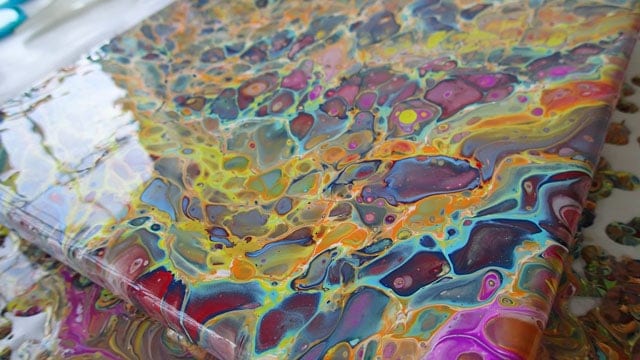

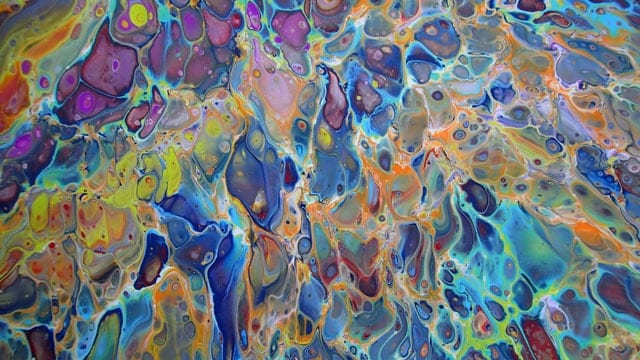

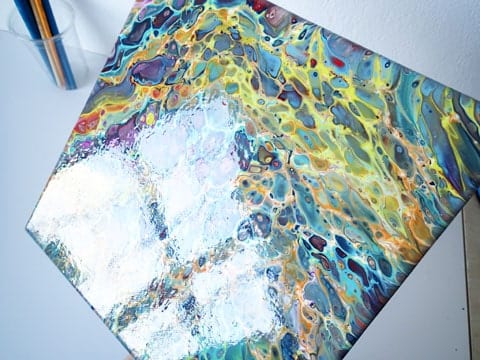
After being told in high school that she was so bad at art that she should switch to another subject, Deby didn’t paint again for 35 years. Then a stroke released a new wave of creativity and she began exploring with dot painting, abstract and eventually acrylic pouring, and at last the joy of working with color returned. You don’t need ‘talent’ to be an acrylic pouring artist – just enthusiasm, some basic instruction, and a willingness to try, fail and try again. Paint along with her and learn from her many mistakes, and you’ll soon make great art together.

Good luck Deby on the 14th, will be thinking of you. Thanks for many great tips. Enjoy Christmas and a happy and healthy 2018
ADORO SUAS ARTES E TÉCNICAS BELÍSSIMAS .
MAS TENHO DIFICULDADE PARA ENTENDER, É POSSÍVEL TRADUZIR PARA O PORTUGUÊS? ESTOU NO BRASIL AMIGA E MEU INGLÊS É PÉSSIMO! FICO TRISTE!
PRECISO COMPRAR O MATERIAL PARA PINTURA… TAMBÉM GOSTARIA DE APRENDER RESINA, POSSO APRENDER COM VOCÊ?
VOCÊ PODE INDUCAR UM SITE QUE EU POSSA ADQUIRIR TUDO O QUE EU PRECISO?
GRATIDÃO AMIGA!!???
Não falo português e não consigo escrever e fazer vídeos nesse idioma. Você pode copiar o texto dos artigos e usar o Google Translate, ou se você estiver usando o navegador Google Chrome, ele deve traduzir o site para o português automaticamente.
Smukke, smukke farver i begge malerier. Er vild med de varme farver og i det hele taget takker for alle dine lærerige indslag.
Det er min fornøjelse. Tak fordi du så med.
Skønne varme farver. Er vild med det du lægger op. Lærerigt og til at forstå.
Mvh Susanne
Mange tak
I do love the colors in this one! I want to try one myself! Thinking of you and keeping you in my prayers for your surgery!
hi Deby, i recently gesso’d vinyl records and did a pour this morning. checking on the pour, i see what looks like the label scrunching up through the paint. any ideas on this? i let the gesso dry 2 days in my apartment around 70 defrees
Its probably not the label, its most likely that the paint has softened the gesso layer and caused it to pucker. It can happen on non-pourous surfaces such as records and tiles and for that reason I don’t usually recommend adding gesso to that sort of thing. Sorry that happened 🙁 If you do want to prime your records etc before pouring to hide the label etc, I suggest trying a spray on primer, which is very thin and hasn’t ever caused problems like this for me. Good luck.
So, I’m very recently interested in acrylic pouring, and I’m starting to do my research. Is there a certain temperature that the painting should be kept at, while drying specifically?
Not that I know of. I paint in the tropics where it is often more than 100 degrees and there are lots who paint in cold countries. I think whatever is a comfortable inside temperature that you keep your house should be fine, avoiding the extremes of very cold weather. Just let the paintings dry normally and slowly. No trying to speed it up because that’s when cracking can occur
That’s great! Thanks!